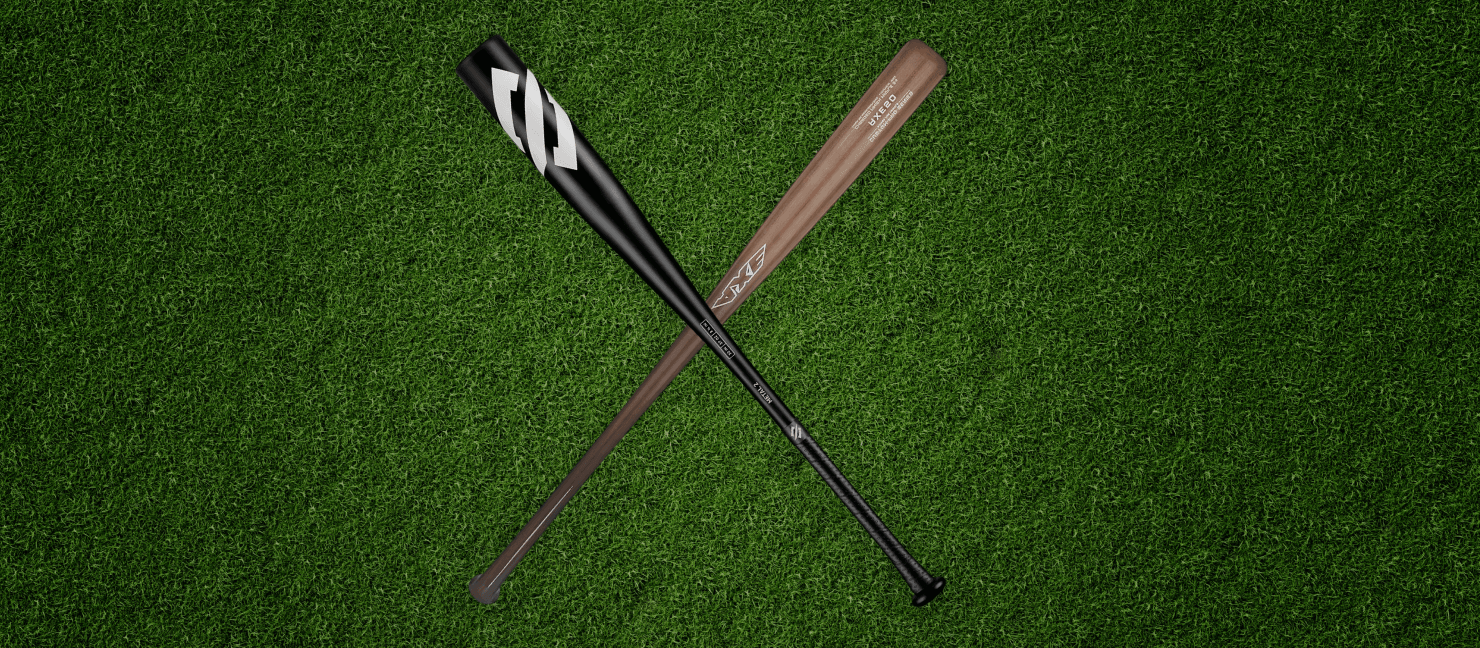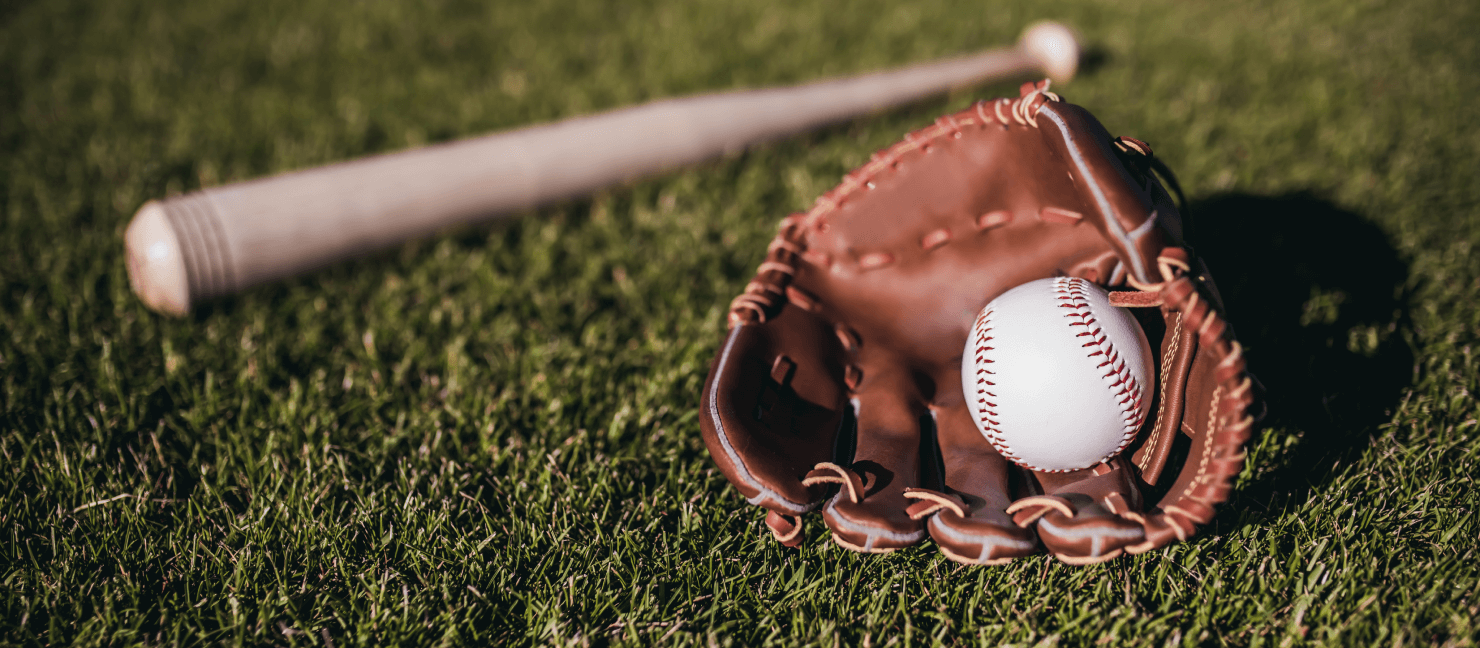What’s the Difference? Wood vs Aluminum Baseball Bats

In the world of baseball, the choice between wood and aluminum bats is a topic of hot debate among players and enthusiasts alike. Whether you're a seasoned slugger or a newcomer to the batter’s cage, understanding the differences between wood and aluminum bats is important for choosing the right equipment for your style and level of play.
To help guide your decision, we’ll dive into the characteristics of wood and aluminum baseball bats so you can swing for the fences every time you step up to the plate.
Key Takeaways
- Wood Bats — Wooden baseball bats are commonly made of ash, birch, and maple. They are most often used by professional players because they are heavy and have smaller sweet spots. Wood bats are safer, tend to have more powerful hits, and can be more affordable.
- Aluminum Bats — Aluminum baseball bats are made of aluminum alloys. They are most often used by amateurs and youth players because they are durable, lightweight, and have larger sweet spots.
- Wood vs Aluminum Bats: Which is Better? — The choice between wood and aluminum bats comes down to player preferences, goals, abilities, and league regulations. Wood bats are great for power and accuracy, while aluminum bats are ideal for casual players or learning baseball basics. If possible, try practicing with each type of bat before making a purchase.
Wood Bats

A wood bat’s durability depends on the wood it’s made of. Ash is lighter and offers a flexible feel but is prone to flaking, while maple is denser, providing more durability and a harder hitting surface, but it can shatter. Birch offers both flexibility and durability.
Expert Tip:
Maple bats tend to be preferred. They are less likely to splinter or break and produce more power and distance. They also make the distinctive cracking sound baseball fans know and love.
As with all baseball bats, wood bats must follow specific regulations to be used in gameplay. Regulations for wood bats vary by league, with professional standards often stricter. For instance, Major League Baseball requires wood bats to meet specific grain and length-to-weight ratio standards to ensure quality and safety. These regulations help maintain consistency and performance across games.
Wood Bat Performance
Wood bats are more balanced than aluminum bats, offering steady, controlled swings. This balance tends to make balls go faster and farther.
They are great for training because they are heavier and vibrate more. The increased weight helps players improve strength and performance. The increased vibration causes the bat to move more in the player’s hands, improving their control of the bat over time.
If a player hits a ball incorrectly, the vibration of a wooden bat may sting their hands or break their bat, encouraging them to use proper techniques and be more aware of their bat’s positioning.
Wood Bat Safety
Wood bats are generally considered the safer option because they have lower exit velocity due to the reduced flexibility and trampoline effect (compared to aluminum), which gives fielders more time to react. However, they do have the potential to break and become projectiles, which can injure the batter or people nearby.
To reduce safety risks, leagues and governing bodies have established rules regulating what drop weight each player can safely use based on age and experience level. Adult players, for example, generally use a drop weight of around -3. If these rules are followed and the bat is used correctly, it is one of the safest baseball bats on the market.
Wood Bat Affordability
The prices of wood bats vary depending on the type of wood used, the quality of craftsmanship, and the brand. Although prices vary, wood bats are typically more affordable than aluminum bats because they don’t need to be replaced as often.
Ash bats are usually the least expensive, making them great for beginners and players on a budget. Birch bats fall in the middle, offering a reasonable compromise between cost and durability. Maple bats are generally the most expensive.
Wood Bat Care and Maintenance
Caring for wood baseball bats can require more effort than caring for aluminum bats. To prevent damage and warping, they must be stored in cool, dry places away from extreme temperatures and humidity. Players must regularly check them for signs of damage and sand down any rough spots. Additionally, players must apply bat wax or oil to protect the wood and improve grip.
Wood Bat Pros
|
Wood Bat Cons
|
Aluminum Bats

Aluminum bats are hollow and made of aluminum alloys containing elements like zinc, copper, magnesium, and silicon. They are known for being lightweight and fast, making them easier to swing and generate more speed. Because they are lighter than wood bats, aluminum bats are popular among amateur and youth baseball players.
Aluminum bats are durable and capable of withstanding repeated hits without significant damage. The aluminum alloys used in their construction provide strength and resilience, reducing the risk of denting or breaking. However, they can develop dents and flat spots over time that will change their performance.
Similar to wood bats, aluminum bats have strict regulations set by organizations like the NCAA and MLB. These regulations cover aspects like bat length, weight, diameter, and performance to ensure fair play and player safety.
Expert Tip:
League rules are designed to limit the trampoline effect (or springiness)of aluminum bats upon contact with the ball to prevent overly fast, potentially dangerous hits.
Aluminum Bat Performance
Aluminum bats have larger sweet spots than wood bats, giving hitters more opportunities to make solid, consistent contact with the baseball. This hitting surface reduces vibrations, making miss-hits less painful. This also allows them to withstand mis-hits farther down the barrel than wood bats without damage or breakage, making them popular among players still learning proper techniques.
Their lighter weights allow for faster swing speeds and higher ball exit velocities. It also reduces the potential for muscles to become injured or quickly tired.
Aluminum Bat Safety
Despite being popular in youth leagues, aluminum bats are seen as less safe than wood bats. In fact, rules and regulations have been established to make aluminum bats perform more like wood bats to improve their safety. Because they cause higher exit speeds, fielders have less time to react to the ball, increasing the chances of serious injuries.
Unlike wood bats, however, aluminum bats don’t break or splinter; they dent. This makes them safer for the batter and surrounding individuals if the bat were to be damaged.
Aluminum Bat Affordability
Aluminum bats vary in affordability depending on factors such as brand and model. Youth aluminum bats are relatively inexpensive, contributing to their popularity in youth leagues. However, advanced features like composite handles or specialized barrel designs can significantly increase cost.
The initial purchase of a higher-quality aluminum bat can be less expensive than a wood bat. However, its susceptibility to dents might require more frequent replacement, making it more expensive in the long run.
Aluminum Bat Care and Maintenance
Caring for aluminum baseball bats is less time-consuming than for wood bats. As with wood bats, aluminum bats must be stored in cool, dry places to prevent damage. They must also be checked regularly for cracks or dents that may impact performance. However, they don’t require any special oil or wax; they just need to be wiped down with a soft cloth and mild soap.
Aluminum Bat Pros
|
Aluminum Bat Cons
|
Bat Performance Standards
Although there is no way to eliminate safety concerns for wood and aluminum bats completely, baseball organizations like the USSSA and BBCOR have set performance standards for all baseball bats to keep the game as safe and fair as possible.
The BBCOR standard, for instance, regulates the trampoline effect of non-wood bats by limiting the Coefficient of Restitution (COR), which measures the energy loss when a baseball hits a bat. The maximum COR allowed under BBCOR is 0.50, which mimics wood bat performance.
The USSSA enforces the Bat Performance Factor (BPF) standard, which measures how fast a ball comes off the bat compared to pitching speeds. The BPF standard is set at 1.15, meaning the bat should not produce a ball speed more than 15% faster than the pitch speed. This standard helps maintain a level of performance that mirrors higher-energy hits but is still within safety limits.
These regulations aim to keep the game enjoyable and competitive while minimizing risks, especially in youth and amateur leagues. Leagues have different requirements for using USSSA and BBCOR bats, so be sure to check league regulations before purchasing one.
Transitioning Between Wood and Aluminum Bats

Many baseball players begin with aluminum bats and later transition to wood bats. This can improve performance, but it’s important to note that the switch to wood bats requires adjustments in swing technique and timing because of their smaller sweet spots and heavier weights.
While wood bats promote better swing mechanics and power generation, mastering their use demands more precision and strength. Players looking to transition from aluminum bats to wood bats should give themselves plenty of time to practice with a wood bat before using it in gameplay.
Wood vs Aluminum Bats: Which is Better?
Ultimately, the choice between wood and aluminum bats depends on player preference, goals, ability, and league regulations. If you’re looking for more power and precision, wood bats may be the best choice. However, if you’re looking to learn baseball basics and build your skills without the extra weight and vibration, aluminum bats are the way to go.
If possible, it’s a good idea to try out both types of bats before making a purchase.
Buying the Right Size Baseball Bat
Regardless of what baseball bat material you choose, finding the right bat size and weight distribution improves your swing mechanics and performance. To find the right size bat, you should consider your height, weight, and hitting style. As a general guide, use our baseball bat size chart. However, remember that aluminum bats are lighter than wood bats.
Expert Tip:
Start with the recommended size for your height and weight, then hold it for 30-45 seconds and take slow practice swings to determine whether it feels right for you.
Have Fun Out There!
Overall, both wood and aluminum baseball bats have advantages and challenges, and you should carefully consider your individual needs and priorities when selecting the right bat for your game. While aluminum bats offer durability, larger sweet spots, and lighter weights, wood bats provide a classic feel, promote better swing mechanics, and are safer.
Whether you choose to step up to the plate with a wood or aluminum bat, Academy Sports + Outdoors has you covered! Check out our wide selection of baseball bats today to knock every game out of the park.


